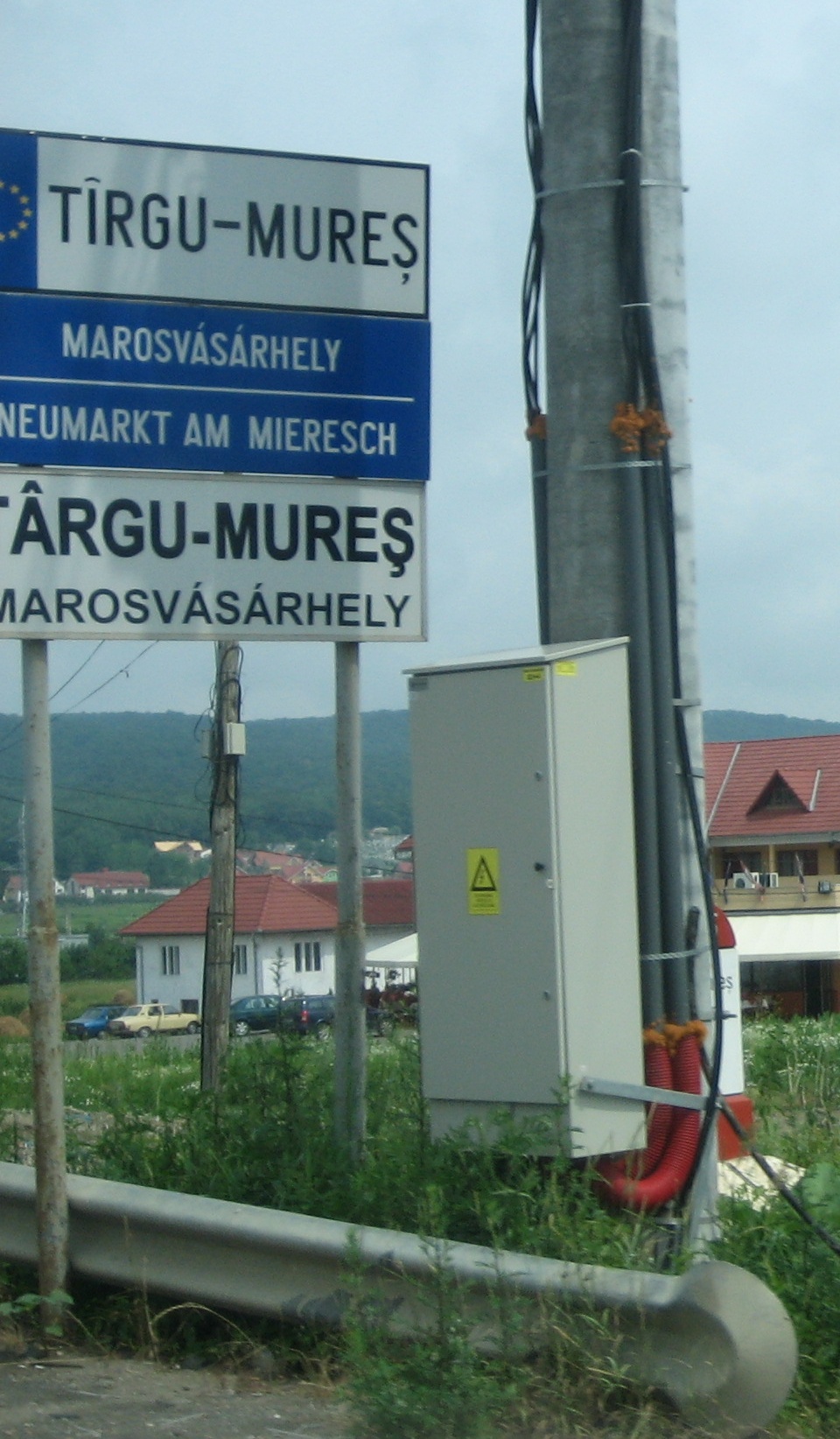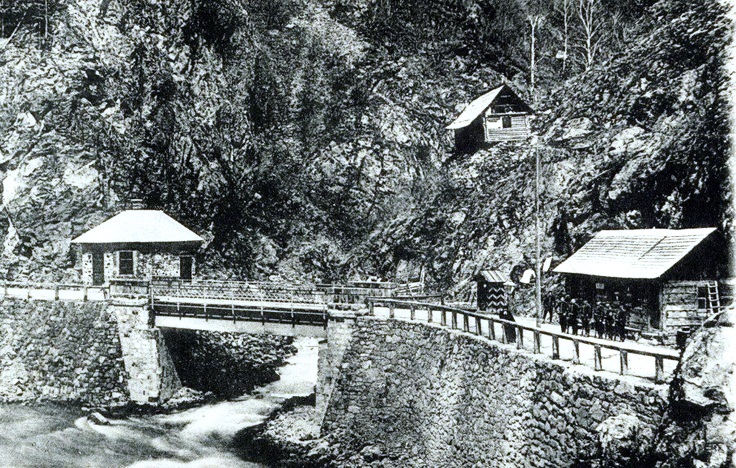|
Târg
A târg was a medieval Romanian periodic fair or a market town. Originally established on the places where periodic fairs were held, some of them (but not all) became permanent settlements, as craftsmen built their workshops near the place where the fair was held. The market towns were still largely agricultural, with the lord of the settlement allowing some inhabitants to become tradesmen or craftsmen in exchange of some fees.Rădvan, p.172 Some of the towns were fortified and became known as cities or fortresses (''cetăți''). Many of the earliest fairs were named after the river that flowed nearby. Examples include: * Târgul Moldovei, on Moldova River (currently known as Baia) * Târgu Mureș, on Mureș River * Târgu Jiu, on Jiu River * Târgul Argeşului, on Argeș River (currently known as Curtea de Argeş) * Târgu Neamț, on Neamț River * Târgu Lăpuș, on Lăpuș River * Cetatea Dâmboviței, on Dâmbovița River (historical name for Bucharest) * Cetatea Sucev ... [...More Info...] [...Related Items...] OR: [Wikipedia] [Google] [Baidu] |
Târgu Mureș
Târgu Mureș (, ; hu, Marosvásárhely ) is the seat of Mureș County in the historical region of Transylvania, Romania. It is the List of cities and towns in Romania, 16th largest Romanian city, with 134,290 inhabitants as of the 2011 Romanian census, 2011 census. It lies on the Mureș (river), Mureș River, the second longest river in Romania (after the Danube). Names and etymology The current Romanian language, Romanian name of the city, ''Târgu Mureș'', is the equivalent of the Hungarian language, Hungarian ''Marosvásárhely'', both meaning "market on the Mureș (river), Mureș (Maros) [River]". ''Târg'' means "market" in Romanian and ''vásárhely'' means "marketplace" in Hungarian. Local Hungarians often shorten ''Marosvásárhely'' to ''Vásárhely'' in speech. The Society of Jesus, Jesuit priest Martin Szentiványi provides the first known written reference naming the city; in his work ''Dissertatio Paralipomenonica Rerum Memorabilium Hungariae'' (written in 1699 ... [...More Info...] [...Related Items...] OR: [Wikipedia] [Google] [Baidu] |
Târgu Jiu
Târgu Jiu () is the capital of Gorj County in the Oltenia region of Romania. It is situated on the Southern Sub-Carpathians, on the banks of the river Jiu. Eight localities are administered by the city: Bârsești, Drăgoieni, Iezureni, Polata, Preajba Mare, Romanești, Slobozia and Ursați. The city is noted for the Sculptural Ensemble of Constantin Brâncuși. History The city takes its name from the river Jiu, which runs through it. In antiquity, there was a Dacian village in around the location of today's city surrounded by forests. After the Roman conquests of Oltenia (101-102), military units were stationed around the roads that connected different important routes at the time. During the digging of the Târgu Jiu - Rovinari railroad, mosaics, coins, ceramics and Roman bricks were found in the south-eastern part of the city. This and ancient testimonies support the idea that Târgu Jiu was a commercial town (a ''vicus'') while under the Roman Empire's rule. A very ... [...More Info...] [...Related Items...] OR: [Wikipedia] [Google] [Baidu] |
Târgu (other)
{{geodis ...
Târgu (Romanian for "the market") starts off the names of several places in Romania: *Târgu Bujor *Târgu Cărbunești *Târgu Frumos * Târgu Gânguleşti *Târgu Jiu *Târgu Lăpuș * Târgu Logreşti *Târgu Mureș *Târgu Neamț *Târgu Ocna *Târgu Secuiesc * Târgu Trotuș See also *Târg A târg was a medieval Romanian periodic fair or a market town. Originally established on the places where periodic fairs were held, some of them (but not all) became permanent settlements, as craftsmen built their workshops near the place where th ... [...More Info...] [...Related Items...] OR: [Wikipedia] [Google] [Baidu] |
Târgu Lăpuș
Târgu Lăpuș (; Hungarian: ''Magyarlápos''; german: Laposch) is a town in Maramureș County, northern Transylvania, Romania. It administers thirteen villages: Boiereni (''Boérfalva''), Borcut (''Borkút''), Cufoaia (''Kohópatak''), Dămăcușeni (''Domokos''), Dobricu Lăpușului (''Láposdebrek''), Dumbrava (''Kisdebrecen''), Fântânele (until 1960 ''Poiana Porcului''; ''Lápospataka''), Groape (''Groppa''), Inău (''Ünőmező''), Răzoare (''Macskamező''), Rogoz (''Rogoz''), Rohia (''Rohi''), and Stoiceni (''Sztojkafalva''). Geography The town is situated at the northwestern edge of the Transylvanian Plateau, at the foot of the Lăpuș Mountains. It lies on the banks of the river Lăpuș and of its tributary, the river Suciu, which flows into the Lăpuș in Dămăcușeni village. The -long is a protected area on the western side of the town, between the villages of Răzoare and Remecioara. is a reservoir in the southeastern part of the town; with a surface area of ... [...More Info...] [...Related Items...] OR: [Wikipedia] [Google] [Baidu] |
Târgu Neamț
Târgu Neamț (; german: Niamtz, hu, Németvásár, he, נאמץ טרגו, la, Ante Castrum Nempch) is a town in Neamț County, Western Moldavia, Romania, on the river Neamț. It had, , a population of 20,496. Three villages are administered by the town: Blebea, Humulești, and Humuleștii Noi. History Originally a market town, hence its name (in Romanian "târg" = ''market''), it had an important role in Moldavian culture. It was first mentioned in a late-14th century document. The name '' neamț'' is a generic name of Slavic origin for the German people in the Romanian language. This has led to speculation of a German foundation of Târgu Neamț, according to which Saxon colonists crossed the Carpathians from the Bistrița area and built a commercial township. Some Romanian historians, including Bogdan Petriceicu Hasdeu consider that Târgu Neamț was probably a German settlement from the 13th century, when the Teutonic Order made incursions from Transylvania against t ... [...More Info...] [...Related Items...] OR: [Wikipedia] [Google] [Baidu] |
Curtea De Argeș
Curtea de Argeș () is a municipality in Romania on the left bank of the river Argeș, where it flows through a valley of the Southern Carpathians (the Făgăraș Mountains), on the railway from Pitești to the Turnu Roșu Pass. It is part of Argeș County. The city also administers one village, Noapteș. On July 7, 1947, the total rainfall in Curtea de Argeș was in 20 minutes, which is a world record. Etymology and names The present name, literally ''The Court upon (river) Argeș'', refers to the former status of the town as the capital of Wallachia. Some historians identify the Argeș River with ancient " Ordessos", however the name is unlikely to be derived from this name. The oldest Slavonic documents use an "Arghiș" form, which might suggest a Cuman or Pecheneg etymology, from the root ''arghiš'' ("higher ground", "heights"). The original name was Argeș, which was then used for the name of the river as well. History Capital of Wallachia One of the oldes ... [...More Info...] [...Related Items...] OR: [Wikipedia] [Google] [Baidu] |
Neamț River (Moldova)
Neamț may refer to the following places in Romania: *Neamț County, an administrative division * Neamț Mountains *Neamț Citadel, a fortress near Târgu Neamț, Neamț County *Piatra Neamț, the capital city of Neamț County *Târgu Neamț, a town in Neamț County *Neamț Monastery, a monastery near Târgu Neamț * Neamț (Moldova), also ''Ozana'', a tributary of the Moldova in Neamț County * Neamț, a tributary of the Mraconia in Mehedinți County * Neamțu, a tributary of the Nemțișor The Nemțișor is a left tributary of the river Neamț (Ozana) in Romania Romania ( ; ro, România ) is a country located at the crossroads of Central, Eastern, and Southeastern Europe. It borders Bulgaria to the south, Ukraine to the ... in Neamț County See also * Németh {{DEFAULTSORT:Neamt ... [...More Info...] [...Related Items...] OR: [Wikipedia] [Google] [Baidu] |
Romania
Romania ( ; ro, România ) is a country located at the crossroads of Central Europe, Central, Eastern Europe, Eastern, and Southeast Europe, Southeastern Europe. It borders Bulgaria to the south, Ukraine to the north, Hungary to the west, Serbia to the southwest, Moldova to the east, and the Black Sea to the southeast. It has a predominantly Temperate climate, temperate-continental climate, and an area of , with a population of around 19 million. Romania is the List of European countries by area, twelfth-largest country in Europe and the List of European Union member states by population, sixth-most populous member state of the European Union. Its capital and largest city is Bucharest, followed by Iași, Cluj-Napoca, Timișoara, Constanța, Craiova, Brașov, and Galați. The Danube, Europe's second-longest river, rises in Germany's Black Forest and flows in a southeasterly direction for , before emptying into Romania's Danube Delta. The Carpathian Mountains, which cross Roma ... [...More Info...] [...Related Items...] OR: [Wikipedia] [Google] [Baidu] |
Jiu River
The Jiu (; hu, Zsil ; german: Schil or Schiel; la, Rabon) is a river in southern Romania. It is formed near Petroșani by the confluence of headwaters Jiul de Vest and Jiul de Est. It flows southward through the Romanian counties Hunedoara, Gorj and Dolj before flowing into the Danube near Zăval, a few kilometers upstream from the Bulgarian city of Oryahovo. It is long, including its source river Jiul de Vest. It has a basin of . p. 13 Its average discharge at the is . The upper |
Suceava River
The Suceava ( uk, Сучава ''Suchava'', ro, Suceava, hu, Szucsáva) is a river located in the north-east of Romania ( Suceava County) and western Ukraine (Chernivtsi Oblast). It is a right tributary of the river Siret. It discharges into the Siret in the town Liteni, e-calauza.ro 21 km south-east of the city of . It rises from the Obcina Mestecăniș Mountains in Bukovina, near the border with |
Suceava
Suceava () is the largest urban settlement and the seat town ( ro, oraș reședință de județ) of Suceava County, situated in the historical region of Bukovina, northeastern Romania, and at the crossroads of Central Europe, Central and Eastern Europe. Klaus Peter BergerThe Creeping Codification of the New Lex Mercatoria Kluwer Law International, 2010, p. 132 During the late Middle Ages, namely between 1388 and 1564, this middle-sized town was the capital of the Moldavia, Principality of Moldavia. From 1775 to 1918, Suceava was controlled by the Habsburg monarchy, initially part of its Kingdom of Galicia and Lodomeria, then gradually becoming the third most populous urban settlement of the Duchy of Bukovina, a constituent land of the Austrian Empire and subsequently a crown land within the Cisleithania, Austrian part of Austria-Hungary. During this time, Suceava was an important, strategically-located commercial border town with the then Romanian Old Kingdom. Throughout the Aust ... [...More Info...] [...Related Items...] OR: [Wikipedia] [Google] [Baidu] |
Moldova River
The Moldova () is a river in Romania, in the historical region of Moldavia. It is a right tributary of the river Siret. The river rises from the Obcina Feredeu Mountains of Bukovina in Suceava County and joins the Siret in Cotu Vameș, east of the city of Roman in Neamț County. e-calauza.ro The total length of the Moldova from its source to its confluence with the Siret is .Planul de management al spațiului hidrografic Siret Administrația Națională Apele Române, page 17 [...More Info...] [...Related Items...] OR: [Wikipedia] [Google] [Baidu] |


.jpg)

